|
Different schools have different requirements for learning experiences during distance learning. Some schools require teachers to hold live classes with the same regularity they would meet in physical classrooms. Some schools require 1-2 live classes a week. Others don't have any requirements, and it’s up to teachers if they want to hold daily live classes, never hold a live class, or find some combination of both synchronous (i.e., happening in real-time) and asynchronous (i.e., not happening in real-time) learning experiences. If you as a teacher or administrator have some flexibility in whether to hold live classes or assign asynchronous tasks, you may be wondering what your ratio of live classes to asynchronous tasks should be. The short answer is there is no right answer because each context is different. But, let’s dive into some of the things you may want to consider. Benefits of Live Classes Social Connection. One of the best reasons to hold live classes is to create space for social connection. At a time when students are isolated in their homes and unable to go see friends, opportunities to connect in real time with their teachers and classmates is powerful. If we think of Maslow’s hierarchy of needs, many educators have pointed out (even before the pandemic) that belonging is a prerequisite to learning. Learning doesn’t happen until students get to the top of that pyramid. It’s familiar. For both teachers and students, live classes are probably the closest equivalent to how classes were run in a physical classroom. For teachers, designing a lesson for a defined period of time in which students are (ideally) present in real time makes it possible to do traditional classroom activities like lecture, have a class discussion, or use breakout groups for small group discussion (depending on your video conferencing tool). It’s less work to find additional tools or avenues for students to communicate with you and with each other because it’s somewhat familiar. Students may also find comfort in this familiar(-ish) structure. Immediate feedback. If a student has questions, they can ask during a live class and get an immediate answer. When asking questions through email, there is typically a delay before receiving a response. Additionally, if a teacher notices students are confused or they have misconceptions about the content, they can correct it in the moment on a live call. Provides structure. For students (and educators!) who may struggle with the lack of structure during distance learning, live classes add structure to the day. For those who attend, it’s an accountability measure to get them out of bed and into work mode. It can serve as a reminder of work to be completed or questions they want to ask. Benefits of Asynchronous Learning Tech flexibility. Some forms of asynchronous learning will not require devices (e.g., reading, journaling, paper-based worksheets). For tasks that do require devices, eliminating the requirement to use a device at a specified time will give students who share devices with family members more flexibility as to when they’re able to get on. Even if students do have their own device, there may be limited bandwidth available for multiple family members to be on live calls at the same time. Asynchronous assignments enable students to get online when they are able to get on. Time flexibility. For younger students who need assistance using technology, they may only be able to get online when a caretaker is available to help them. Many caretakers are still working—some at home and some outside of the home if they are determined to be essential workers. Asynchronous learning experiences offer more flexibility for students who need caretaker help in accessing class materials. Many older students also benefit from that flexibility, as they may be tasked with watching younger siblings or, in some cases, they may be essential workers themselves, and need to complete school work outside of typical school hours. Less video conferencing overwhelm. Some students may find it difficult to concentrate during live classes. There are a lot of stimuli: various faces on the screen, multiple microphones unmuted at once, background noise! Also, having to navigate the video conferencing system itself and all of the new features can be exhausting. I see adults in my virtual PD sessions struggle with this on a daily basis. The struggle is real—for youth and adults. What’s the ideal balance? Again, it’s up to you. My own approach to this is anything that can be done well asynchronously, should be. In my current college class, I’ve held just two synchronous sessions for the whole second half of the semester (since we transitioned to distance learning). I asked students how they were experiencing this approach and received overwhelming positive feedback. They appreciated the flexibility asynchronous learning opportunities offered, especially as the majority of their other classes were being run as live sessions. That said, you know your students best. Find a cadence that works best for you. Maybe that’s one live session a week. Maybe that’s more (or less). My best recommendation is to check in with your students to see what’s working and what’s not working for them. Asking students is always a good idea! I hope this run down of considerations will help you develop an approach that works for you and your students. I’d love to hear how you structure your activities and what your breakdown of synchronous and asynchronous activities is. Feel free to share in the comments or in our Facebook group!
0 Comments
Leave a Reply. |
Details
For transcripts of episodes (and the option to search for terms in transcripts), click here!
Time for Teachership is now a proud member of the...AuthorLindsay Lyons (she/her) is an educational justice coach who works with teachers and school leaders to inspire educational innovation for racial and gender justice, design curricula grounded in student voice, and build capacity for shared leadership. Lindsay taught in NYC public schools, holds a PhD in Leadership and Change, and is the founder of the educational blog and podcast, Time for Teachership. Archives
May 2024
Categories |
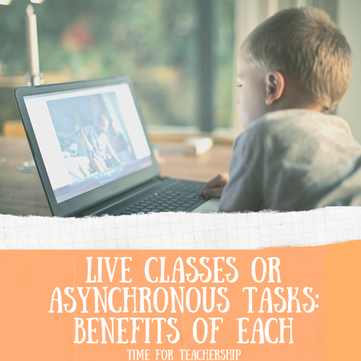
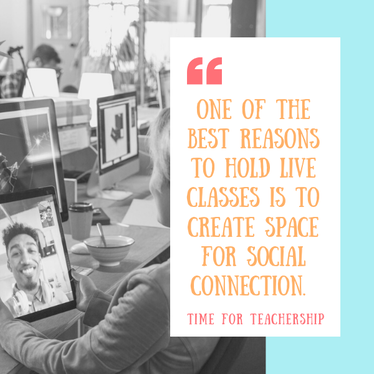
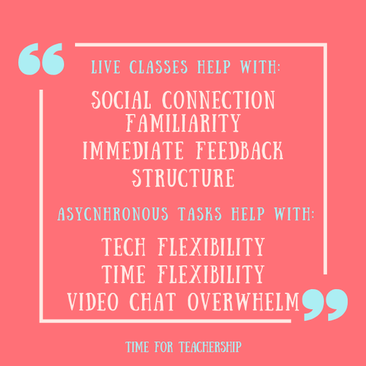
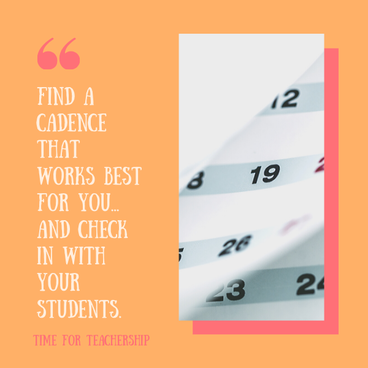
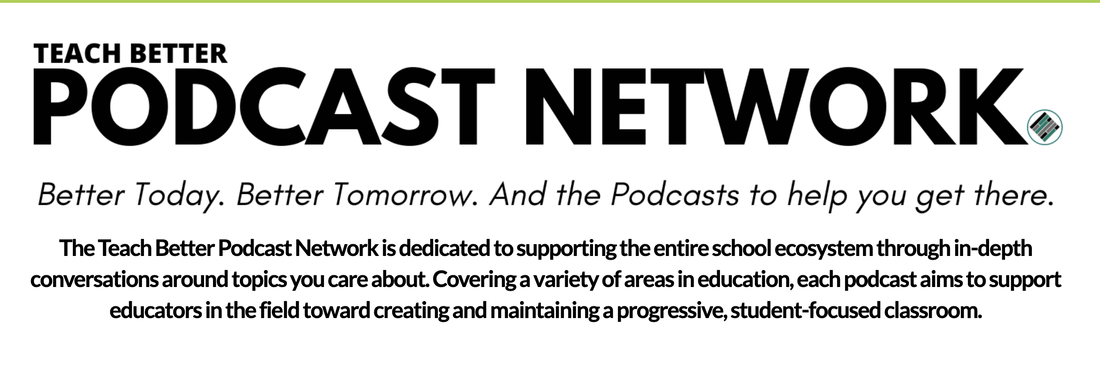
 RSS Feed
RSS Feed